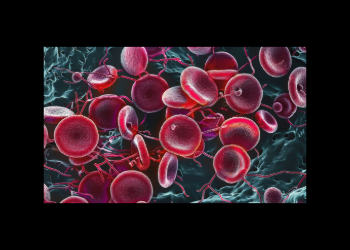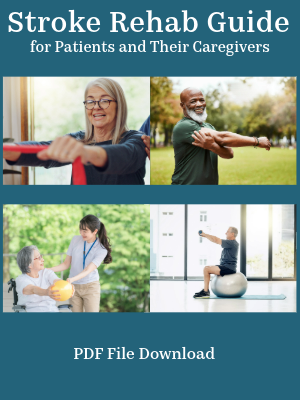Are Strokes Hereditary? Understanding Your Risk
Stroke victims and families often ask, "Are strokes hereditary?" The answer is a complex one. While many factors that contribute to stroke are lifestyle-related, the undeniable truth is that genetics can play a significant role in determining an individual's risk.

Hereditary Conditions Linked to Stroke
A family history of stroke is a red flag. It suggests a potential genetic predisposition to conditions that can increase stroke risk. While not a guarantee that you will have a stroke, it certainly warrants attention and calls for proactive steps .
A variety of genetic disorders can elevate the risk of stroke. Understanding these conditions is crucial for early detection and prevention.
Vascular Disorders
- Cerebral Autosomal Dominant Arteriopathy with Subcortical Infarcts and Leukoencephalopathy (CADASIL): This rare condition affects blood vessels in the brain, leading to recurrent strokes. CADASIL is a genetic mutation that leads to the buildup of abnormal proteins in the walls of small arteries in the brain. This buildup weakens and damages blood vessel walls. Over time, these vessels can narrow or become blocked, reducing blood flow to the brain which can lead to strokes, migraines, cognitive decline, and other neurological problems.
- Fibromuscular Dysplasia (FMD): This disorder affects the arteries, causing abnormal growth and weakening, which can lead to aneurysms or blockages. While there is evidence suggesting a genetic component to FMD, it's not definitively considered a hereditary condition. The exact role of genetics in FMD is still being studied
- Moyamoya Disease: A rare condition where arteries at the base of the brain become narrow, leading to reduced blood flow. The abnormal blood vessels create a condition where the brain is deprived of adequate oxygen and nutrients, making it highly susceptible to stroke. Studies have shown that a specific gene, RNF213, is associated with Moyamoya disease.
- Sickle Cell Disease: While primarily a blood disorder, it can lead to stroke, particularly in children. Blood cells in those with sickle cell disease are crescent-shaped and rigid. These abnormal cells can clump together and block blood vessels, particularly small ones in the brain. Additionally, sickle cell disease can cause inflammation in blood vessels, which can contribute to their narrowing and blockage. The higher risk of stroke in children with sickle cell disease is primarily due to the rapid growth and development occurring during childhood.
Blood Clotting Disorders

- Factor V Leiden: This genetic mutation increases the risk of blood clots, which can lead to stroke.
- Protein S or C Deficiency: Protein S and Protein C are produced by the liver that work together as a natural anticoagulant. This means they help prevent blood clots from forming. A deficiency impairs the body's ability to break down blood clots, increasing stroke risk.
If you have a family history of blood clots or have experienced one yourself, your doctor might recommend testing for Factor V Leiden or protein deficiency. Management of these disorders may involve medication to help prevent blood clots and maintaining a healthy lifestyle.
Connective Tissue Disorders
- Marfan Syndrome: This genetic disorder affects connective tissue, including blood vessels, increasing the risk of aneurysms. To learn more about Marfan Syndrome, visit https://marfan.org.
- Ehlers-Danlos Syndrome (EDS): Certain types of this condition can weaken blood vessels, leading to aneurysms or dissections. To learn more about EDS, visit https://www.ehlers-danlos.com/what-is-eds/.
Preventing Hereditary Stroke
While you cannot alter your genetic makeup, you can take steps to reduce your risk of stroke. Even if you have a family history of stroke, adopting a healthy lifestyle is essential.
- Manage Blood Pressure: High blood pressure is a major risk factor for stroke. Regular monitoring and treatment are crucial. Make sure to adhere to medication recommendations as uncontrolled blood pressure is a leading cause of stroke.
- Control Cholesterol: High cholesterol levels can contribute to stroke. A healthy diet and exercise can help manage cholesterol.
- Maintain a Healthy Weight: Obesity increases the risk of various health conditions, including stroke.
- Don't Smoke: Smoking significantly raises the risk of stroke. Quitting smoking is one of the best things you can do for your health.
- Regular Exercise: Physical activity helps maintain a healthy weight, reduces stress, and improves overall cardiovascular health.
- Healthy Diet: A balanced diet rich in fruits, vegetables, and whole grains can help lower the risk of stroke.
- Limit Alcohol: Excessive alcohol consumption can increase blood pressure and other stroke risk factors.
- Regular Health Check-ups: Regular medical check-ups can help identify and manage risk factors early on.
- Manage Underlying Conditions: If you have a diagnosed genetic condition, work closely with your healthcare provider to manage it effectively.
- Know the Signs of Stroke: Familiarize yourself with the symptoms of stroke (FAST: Face drooping, Arm weakness, Speech difficulty, Time to call 911) and act quickly if you suspect one.
Remember, while genetics play a role in stroke risk, many factors are within your control. By adopting a healthy lifestyle and working closely with your healthcare provider, you can significantly reduce your chances of experiencing a stroke.
Are Strokes Hereditary: Final Takeway
The answer to the question, "are strokes hereditary?" is complicated. Yes, there can be a hereditary link to stroke, but it's important to remember that while certain genetic factors can heighten the risk of stroke, not all strokes are hereditary. To best understand your risk, consult with a physician regarding your family medical history. In addition, take stroke prevention measures by monitoring your health and making healthy lifestyle choices.
Disclaimer: This article is intended for informational purposes only and does not constitute medical advice. Always consult with a healthcare professional for personalized guidance.
Get Our Stroke Rehab Guide

Our stroke rehab guide is designed specifically for patients and caregivers. It's in pdf format and can be immediately downloaded. It includes about
- Stroke Definition & Causes
- Stroke Treatment
- Rehabilitation Information for Physical, Occupational and Speech Therapy
- Exercise pictures
- Q&A from patients and caregivers
- Adaptive Equipment & Techniques
- How to Prevent Another Stroke & More!
Medical Disclaimer: All information on this website is for informational purposes only. This website does not provide medical advice or treatment. Always seek the advice of your physician or other healthcare provider before undertaking a new healthcare or exercise regimen. Never disregard professional medical advice or delay seeking medical treatment because of something you have read on this website. See the disclaimer page for full information.
- Home
- Stroke Prevention
- Are Strokes Hereditary













